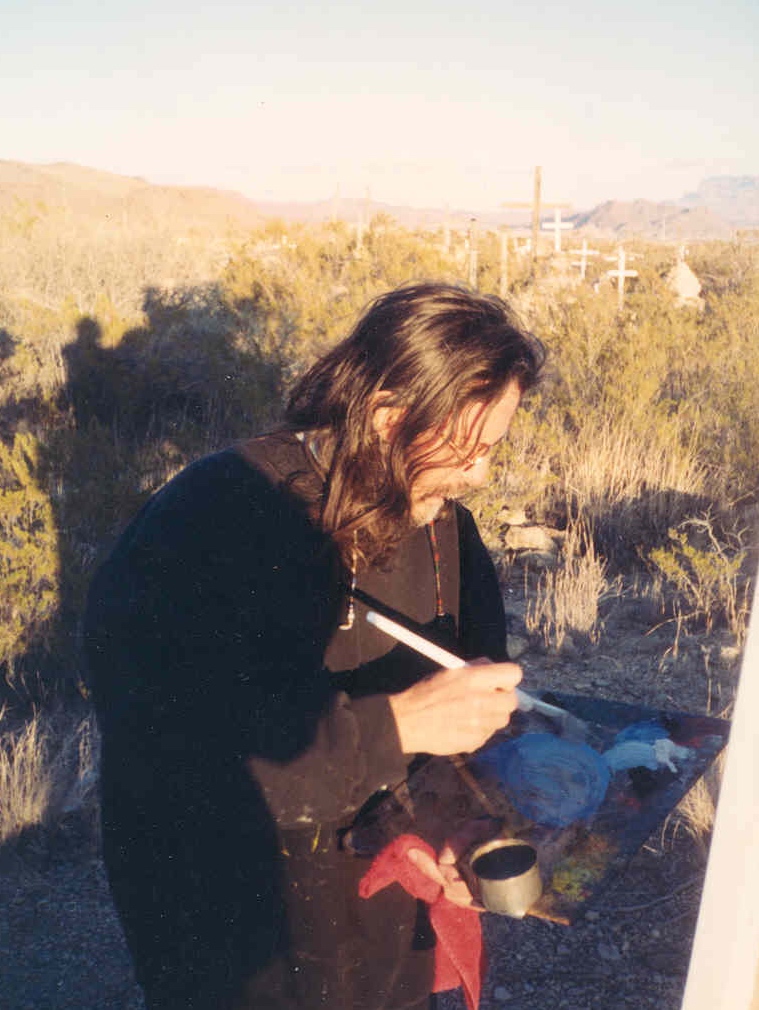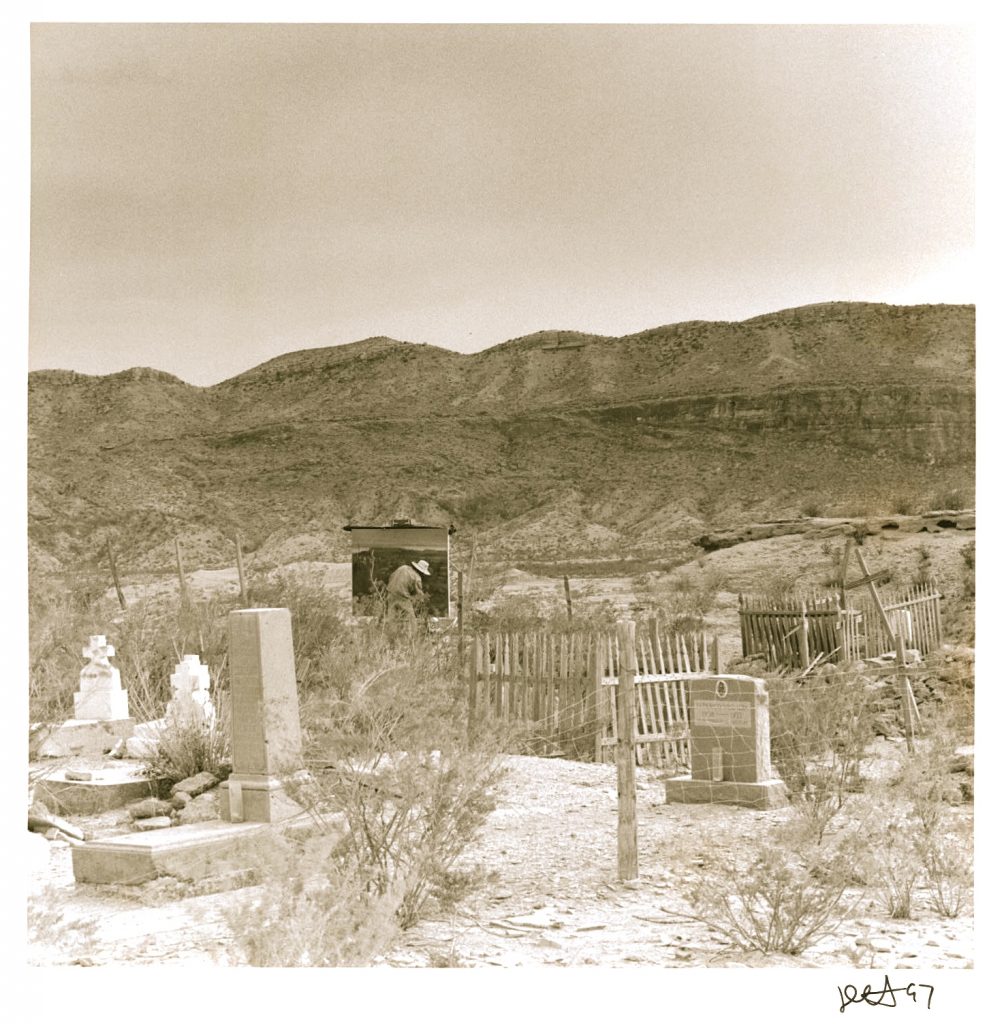
|
|
Near the Rio Grande in the Chihuahuan desert, on the American side, sits the small ghostown of Terlingua. Once an important mining town rich with cinnabar (the bright red mineral from which quicksilver or mercury is extracted), its glory long ago dwindled down into a quiet town made of a few unusual people, some seasonal tourists and a crew of strong boat men making a living from the tourists who wanted to float the winding river. The old adobe church, the mexican graveyard and the river were and still are, the only attractions in the area.
Miguel saw the graveyard for the first time on a cold December morning. An endless canopy of gray hid every trace of blue sky and the colors of the desert were rich and saturated under the soft light of an overcast day. The old tombstones where magnificent, standing alone on the ochre brown mountains of the desert; a sight that told the story of the men who’d lived and died in the roughness of that land.
Miguel instantly fell in love and decided we would camp there. My eyes asked, “In the cemetery?” but Miguel was already walking around the mounds of rocks and broken crosses looking for the spot to nail down his easel.
On that quiet morning he chose the Terlingua Cemetery in West Texas to be his first desert landscape in the series of the Southwest.
He picked a view of the Chisos Mountains in the background with the gray, abandoned cemetery in the front. We nailed down the easel with twelve inch steel nails, much like the ones I’d seen in movies when laying down railroad tracks. We screwed handles onto the wooden back of the canvas panel and tied it all together with steel cables…an engineering feat that would not always prove to work against the winds of the Southwest and we began to paint.
On the fourth day in the graveyard, we woke up under a beautiful blue sky. The thick layer of clouds had all blown over the Chisos Mountains and now the blinding brightness of the desert sun had not only washed out the richness of the colors but the emotion of the previous days as well. This was a reality adjustment if there ever was one; in the desert there are VERY few cloudy days.

Starting a painting of a desert scene on a cloudy day would set the pace of our adventures for many years to come. We had many questions: How can we find the same melancholic light of the first day on a bright sunny day? How can we see the richness in the colors when such a strong light washes them out? And how long will this painting take to complete if there are only a handful of cloudy days?
Miguel had a vision of the cemetery painintg enveloped in a cool, filtered light. He had to find a solution; to work on this piece only when light conditions were similar to those of a cloudy day. That meant painting in the graveyard in winter time and only early in the morning, before the sun rose high in the sky. This resulted in, at best, three hours of painting a day.
Cloudy mornings were a celebration. Miguel would jump to his feet and quickly layer on the thermal shirt, sweater and winter jacket, gloves and a hat. Cold days in the desert can be brutally cold but such special occasions couldn’t be wasted. So out we went for 8 hours of glorious painting! Yes, I’d come along too, painting on my small version of the Terlingua Cemetery.
Our life turned into an artistic pilgrimage traveling to the landscapes were paintings had been left unfinished the previous year. The Terlingua Cemetery and Big Bend National Park every winter and spring. In April we moved our camp up to the North Rim of the Grand Canyon were the mild weather and remote locations became the perfect place for the summer and fall.
Our mid way stop was the art storage in Santa Fe, New Mexico, a town we loved. We’d switch out canvases from winter to summer ones, had a chocolate croissant at La Fonda on the plaza and visited a few galleries before going back for the next painting season to our studio in nature.
And so it was that in search of the perfect light, eight years passed on our journey from the cemetery to the desert.
Natasha Gray
